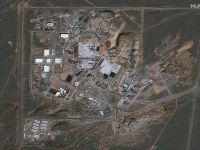Last year the Fed announed its $600 billion (Dh2.20 trillion) second round of quantitative easing (QE2) in November, three months after the Jackson Hole Fed symposium. It pumped a lot of liquidity into the markets. Commodities rose and the dollar fell. The government bond-buying programme depressed US yields, increasing the appeal of higher-yielding emerging markets. The rising hopes for a QE3 has been reflected in emerging market equities in recent days.
“There is high expectation of some kind of announcement from Ben Bernanke, whether its QE3 or some other measures,” said Michael Ganske, head of emerging markets research at Commerzbank. “Also within emerging markets, all the recent releases show that central banks are geared to support growth and are more cautious on rate hikes.”
Capital controls
In the last tranche of QE, companies flooded the big emerging markets with foreign direct investment and portfolio managers bought higher yielding bonds in all four BRICs countries. Strong capital flows and the dollar carry trade resulted in asset price inflation and currency appreciation in many emerging markets, forcing many of them to introduce capital controls.
Analysts expect another round of easing to lead to escalating currency wars. The weaker dollar led to stronger currencies in countries like Brazil and Russia, with Brazil in particular blaming a lot of its inflation problems on loose monetary policies in the US and Europe. Brazil’s Finance Minister Guido Mantega told the Brazilian Senate on Tuesday that the excess liquidity led to speculation in emerging markets. High inflation has been a downer for equity markets in Brazil, Russia, India and China this year.
The Gulf countries will be relatively less impacted by a further monetary easing and the consequent weakening of the dollar. Gulf Cooperation Council (GCC) countries experienced inflationary pressures and the creation of asset bubbles from 2005-08. Imported price inflation is mainly related to food imports. And while food-price inflation is on the rise across the GCC and Mena regions, it is not leading to runaway inflation. It is also worth noting that credit and money supply growth are subdued, which is helping to keep inflation under control. As a result, pressure on the currency pegs from rising inflation is fairly limited.
Garbis Iradian, deputy director, Africa Middle Department of Institute of International Finance (IIF) told Gulf News in a recent interview: “Inflationary pressures across the region are generally limited as rents in the UAE, Qatar and Kuwait continued to decline. Despite pressures from rising global non-fuel commodity prices, particularly food prices, average 2010 headline inflation in the region is projected at around 3.5 percent in 2010 and 4.2 percent in 2011.”








